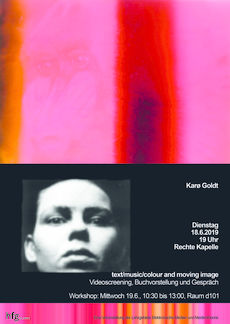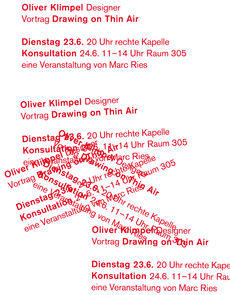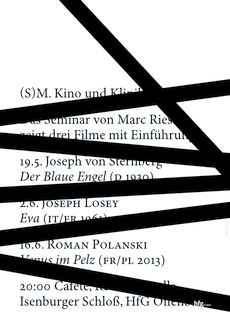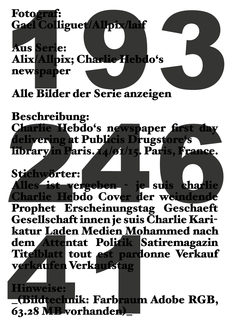Sociology and Media Theory
Vertretungsprofessorin im WiSe 2025/26 und SoSe2026
Media means more than photography, film, television or the Internet. They are not simply technical artifacts that can be found in the world as distinct and stable classes of objects; rather, different things can move into the position of the middle, the middle ground and the in-between. Much more fundamental and multifaceted are media ways and operations of relating and mediating, of separating and connecting. They shape our ways of perceiving, acting and thinking; constitute, support or enforce historically specific forms of subjectivation and individuation; and are involved in hybrid collectivization practices of the human and non-human.
The Chair of Media Theory at the HfG Offenbach represents an operative-processual concept of the medial. Of interest is which operations are characteristic of different media constellations and which processes are enabled or excluded by the media. This corresponds to a shift from the logic of substances to thinking in terms of relations, processes and material practices. Instead of drawing, the process of drawing is in the foreground, instead of writing, the processes of writing; instead of speaking of photography, the gestures of photography must be addressed. The affinity for practices, material processes and ways of media mediation and production also predestines this concept of media for the examination of artistic and creative practice.
However, the focus on media operations does not exclude the stabilization of such processes in dispositives and assemblages. Media operations take place in concrete socio-cultural, political and economic constellations and help to shape them. Neither resources, options for access or action, nor influence are equally distributed in media arrangements, which requires attention to the asymmetries, hierarchies or exclusions caused by the media. For this reason, the question of media processes and operations must also include analyses of power and agency.
Doctoral candidates Prof. em. Dr. Marc Ries
Doctoral candidates
Manuel Ahnemüller
The Plastic Bag A Designed and Designing Everyday Object - A Cultural-Scientific and Media-Theoretical Investigation of the Plastic Bag on the Collection of Volkmar Schnöke
Ornella Fieres
The Occult Digital Phenomena of the Occult in Digital Culture and Contemporary Art
Falk Haberkorn
An Attempt at the Gesture of Photography
Margret Hoppe
The Architect of the Photographer. On the Relationship between the Photographs of Lucien Hervé and the Architecture of Le Corbusier
Annie Kurz
Offline, unplugged, disconnected... A postphenomenological investigation of absence relations to technologies
Patrick Raddatz
New Jack Cities - City-Sound Relations and Structures of House and Techno in the German Early Years
Julia Rommel
Ubiquity - Constituting Space in the Context of Information and Communication Technologies
Marian Rupp
Figural Fabulation Graphic Philosophy and the Entanglement of Matter and Meaning
Mathias Windelberg
Cabinets of Showing Institutional Critique in Expanded Cinema - Expanded Cinema in Institutional Critique
Carsten Wolff
Willy Fleckhaus and the coolly calculated intoxication of colors
Christine Würmell
Image-Sharing and Activism



